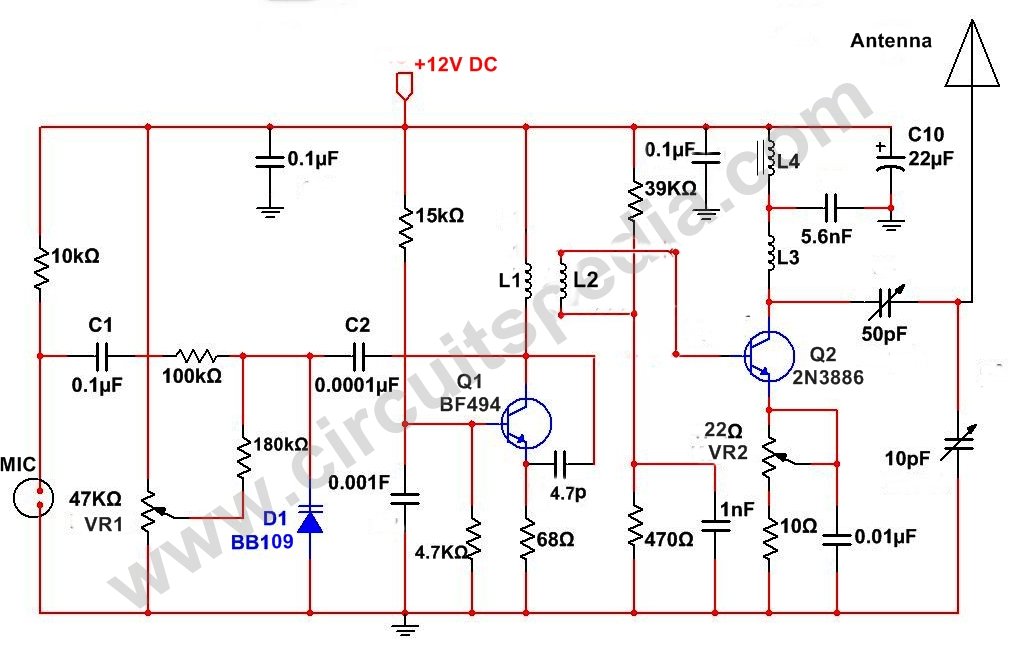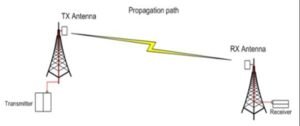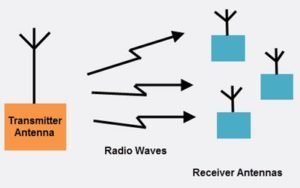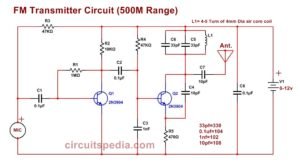Long Range FM Transmitter Circuit
The FM transmitter circuits generate the output power depending on the power amplifier. If any transmitter circuit has to consist of the Rf amplifier stage, and oscillator stage then the output power of that ckt provides a good power signal. The transmitter circuit described here with an extra RF power amplifier stage increases the power output to 200-250 milliwatts after the oscillator stage. This Long Range FM transmitter using two transistors can provide reasonably good signal strength up to a distance of about 2 kilometers With a good matching 50-ohm ground plane, antenna or multi-element Yagi antenna.
To change the frequency of the FM transmitter a varicap diode is included which provides frequency modulation by audio signals. BB109 is a Varactor Diode, varactor diode is a reverse-biased p-n junction diode, whose capacitance can be varied electrically. As a result, these diodes are also referred to as varicaps, tuning diodes, voltage variable capacitor diodes, parametric diodes and variable capacitor diodes.
The circuit is make using transistor Q1 (BF494) is a low-power variable high-frequency VHF oscillator. The power at the output is about 50 milliwatts. Transistor Q2 (2N3866) ie as VHF-class A power amplifier. It makes the signal powerful by boosting the oscillator signal power four to five times. After that 200-250 milliwatts of power is generated at the collector of transistor T2 and then the signal is fed through a capacitor for output transmission.
Assemble the circuit on a good-quality glass epoxy board and house the transmitter inside an aluminum case for better quality. Shield the oscillator stage using an aluminum sheet. Coil winding details are given below:
• L1 – 4 turns of 20 SWG wire close wound over 8mm diameter plastic former.
• L2- 2 turns of 24 SWG wire near the top end of L1.
• (Note: No core (i.e. air core) is used for the above coils)
• L3 – 7 turns of 24 SWG wire close wound with 4mm diameter air core.
• L4 – 7 turns of 24 SWG wire-wound on a ferrite core.
For noiseless operation use, only battery of 12v or 9 v. Does not use Ac to dc adaptor. Potentiometer VR1 is used to adjust the fundamental frequency whereas potentiometer VR2 is used as power control. Transistor T2 must be mounted on a heat sink. Do not switch on the transmitter without a matching antenna. Adjust both trimmers (VC1 and VC2) for maximum transmission power. Adjust potentiometer VR1 to set the fundamental frequency near 100 MHz. Make sure that connection all components are soldered correctly, no loose connections because they create frequency variation repeatedly.
This circuit is shown for educational purposes only. This transmitter should only be used for educational purposes. Regular transmission using such a transmitter without a license is illegal.







